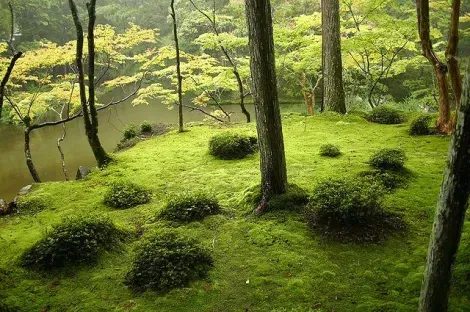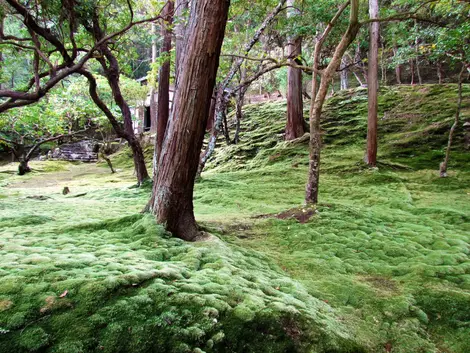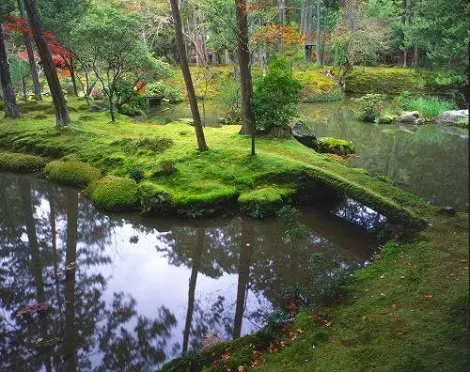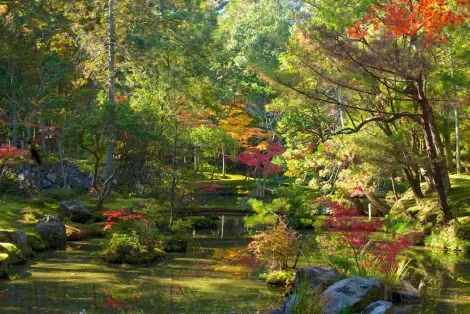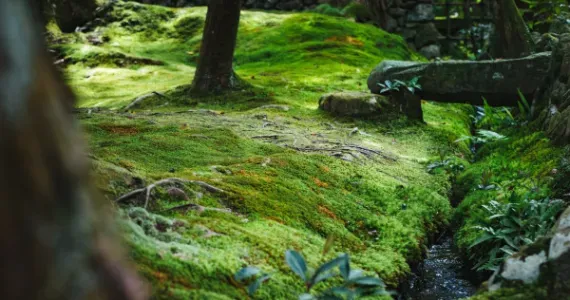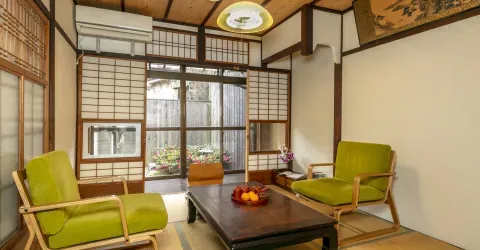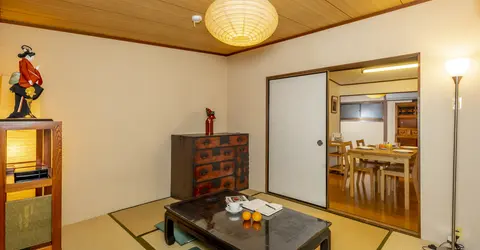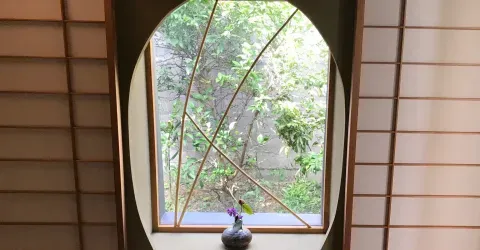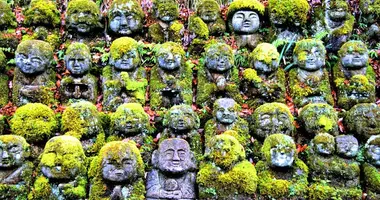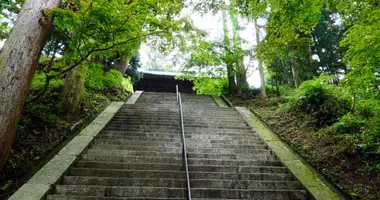Saihoji / Kokedera: the Temple of Mosses
- Published on : 18/06/2024
- by : J.L.T.B.
- Youtube
Saihoji Temple, better known as Kokedera or Moss Temple, is an emblematic UNESCO World Heritage site in Kyoto. Located in the western suburbs of the ancient Japanese capital, this Zen Buddhist temple offers a unique experience combining spirituality and nature. Founded in the 8th century, Kokedera is home to an exceptional Zen garden featuring 120 varieties of moss. Visits to this extraordinary place require prior reservation and follow a special protocol. Let's find out more about this Zen garden, its fascinating history and how to get there.
History and significance of Saihoji temple
The history of Saihoji temple dates back to the Nara period (710-794). Originally, the site was the secondary residence of Prince Shotoku, before being transformed into a Buddhist temple by the priest Gyoki Bosatsu. The temple then took the name Saihoji, meaning "Temple of Western Fragrances". In the 14th century, the famous Zen monk Muso Soseki completely redesigned the garden, giving it its present configuration.
The Saihoji garden is considered the first Zen meditation garden. The upper part features a composition of rocks reminiscent of a waterfall, while the lower part is organized around a heart-shaped pond (kokoro in Japanese). This "dry landscape" (karesansui) revolutionized the art of Japanese gardens, influencing the design of the Kinkakuji and Ginkakuji gardens in particular.
Over the centuries, the temple went through difficult times, being burnt down during the Onin War and flooded several times. It was only in the 19th century that the mosses naturally proliferated, giving the garden its current appearance. The monks then decided to preserve and cultivate this unique vegetation, making Kokedera a veritable moss sanctuary.
Booking process and access
Visits to Kokedera require prior reservation. Since November 1, 2023, it has been possible to book online on the temple's official website. Reservations can be made up to 2 months in advance, for a maximum of 2 people per request. The price is 4,000 yen per person (approx. 25 euros).
It is crucial to arrive on time on the day of the visit. Latecomers risk being refused entry. The temple is only open at certain times of the year, so check the dates available on the official website.
To get to the temple, take bus 73 from Kyoto station or bus 63 from Sanjo Keihan, and get off at the Kokedera Suzumushi-dera stop. The temple is about a 20-minute walk from this stop.
Tour: Buddhist ceremony and contemplation
The visit to Kokedera begins with a unique Buddhist ceremony. Visitors are invited to take part in a sutra copying session (shakyo), a meditative practice involving the copying of Buddhist texts. This activity lasts approximately 30-60 minutes and takes place in the temple's main hall.
After this spiritual introduction, visitors can finally enter the famous moss garden. A visit to the garden lasts around 1h30, allowing for serene contemplation of this unique space. It's important to respect the calm of the area and follow the paths indicated to preserve the fragile ecosystem.
Visits are generally made in silence, allowing visitors to soak up the peaceful, meditative atmosphere of the place. Photography is permitted in the garden, but not inside the temple.
The moss garden: a natural and landscaped masterpiece
The Kokedera garden is a true masterpiece of Japanese nature and landscape art. It is home to over 120 different species of moss, creating a plant carpet of striking beauty. These mosses offer a palette of colors ranging from soft to dark green, varying with the seasons and the light.
At the heart of the garden is a heart-shaped pond, a symbol of inwardness in Zen philosophy. Around the pond are carefully arranged islands and rocks, as well as century-old trees with moss-covered roots.
The upper garden features a dry landscape typical of Zen gardens, with rock compositions reminiscent of waterfalls and mountains. This part of the garden invites meditation and contemplation.
The importance of Kokedera in Japanese garden design
Kokedera occupies an essential place in the history of Japanese garden design. It is considered to be one of the earliest examples of Zen garden design (karesansui), a style that was to have a profound influence on the aesthetics of subsequent Japanese gardens.
Muso Soseki's design of the garden in the 14th century introduced major innovations, notably in the symbolic use of rocks and water. This approach inspired the creation of many other famous gardens, such as Kinkakuji and Ginkakuji.
In addition, the natural proliferation of mosses and the decision to preserve them created a unique model of forest garden, blending human intervention and natural processes. This approach has influenced the design of many modern gardens, emphasizing the preservation and enhancement of natural ecosystems.
Practical tips for a successful visit to the Temple of Mosses
To make the most of your visit to Kokedera, here are a few practical tips:
- Book in advance: Don't wait until the last minute to book, especially during peak periods.
- Arrive on time: Punctuality is crucial, as latecomers risk being refused entry.
- Prepare for the ceremony: Copying sutras can take up to an hour, so make sure you wear comfortable clothes for sitting on the floor.
- Respect the site: Follow the paths indicated and avoid touching or stepping on the moss.
- Choose the right season: The garden is particularly beautiful during the rainy season (June-July) and in autumn.
- Bring a camera: Photos are permitted in the garden, so take the opportunity to capture the beauty of the place.
For more information on activities in Kyoto, please consult our complete guide.
Preservation and ecological issues
Preserving the Kokedera represents a major ecological challenge. The fragility of the moss ecosystem, combined with the growing influx of tourists, raises crucial questions about the site's conservation.
Since 1977, the temple has implemented strict measures to limit visitor numbers and preserve the integrity of the garden. These measures include a compulsory reservation system and a time limit on visits.
The temple's gardeners are constantly working to maintain and preserve the various species of moss. They face many challenges, not least climate change, which affects moss growth.
Kokedera is also an important study site for botanists and specialists in moss ecology. The research carried out on this site contributes to a better understanding of these fragile ecosystems and to the development of long-term conservation strategies.
As a visitor, you can contribute to the preservation of the site by scrupulously respecting the visiting rules and raising awareness of the importance of this unique heritage. To find out more about this unique experience, visit our page dedicated to visiting Kokedera, the temple of mosses.
Visit the mysterious Kokedera, temple of the mosses
Address, timetable & access
Address
Phone
+81 (0)75 391 3631.Timetable
Open at 10 am from July to September, 1 pm the rest of the year.Price
A donation of 3,000 yen (€23.40) is required on site - credit cards are not accepted.Access
Bus access: Kokedera Suzumushi-dera stop.
Bus 73 from the station.
Bus 63 from Sanjo Keihan.Website
http://saihoji-kokedera.com/en/top.html





